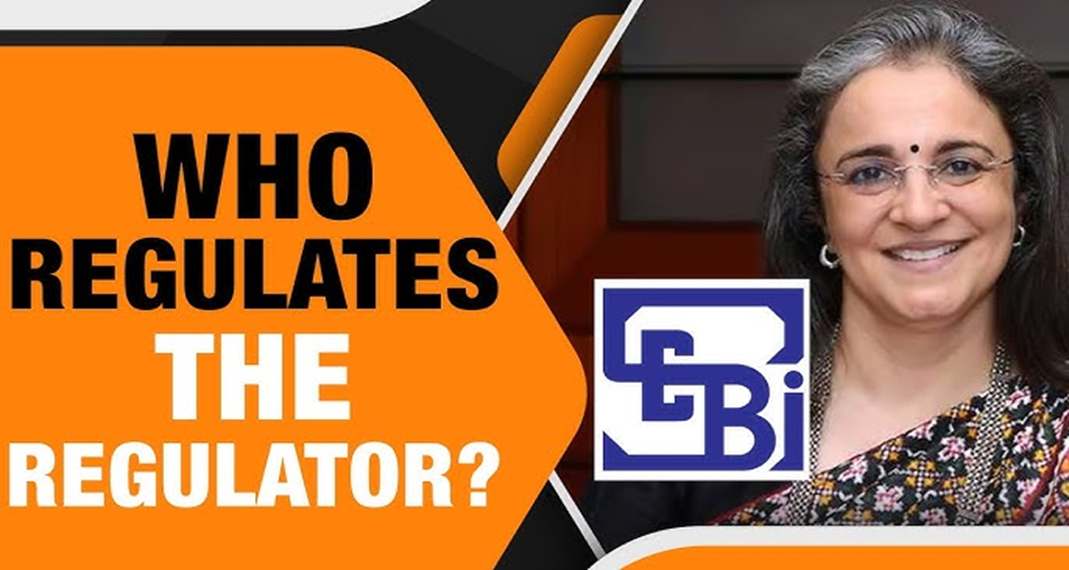- Courses
- GS Full Course 1 Year
- GS Full Course 2 Year
- GS Full Course 3 Year
- GS Full Course Till Selection
- Answer Alpha: Mains 2025 Mentorship
- MEP (Mains Enrichment Programme) Data, Facts
- Essay Target – 150+ Marks
- Online Program
- GS Recorded Course
- Polity
- Geography
- Economy
- Ancient, Medieval and Art & Culture AMAC
- Modern India, Post Independence & World History
- Environment
- Governance
- Science & Technology
- International Relations and Internal Security
- Disaster Management
- Ethics
- NCERT Current Affairs
- Indian Society and Social Issue
- NCERT- Science and Technology
- NCERT - Geography
- NCERT - Ancient History
- NCERT- World History
- NCERT Modern History
- CSAT
- 5 LAYERED ARJUNA Mentorship
- Public Administration Optional
- ABOUT US
- OUR TOPPERS
- TEST SERIES
- FREE STUDY MATERIAL
- VIDEOS
- CONTACT US
PAC To Hold ‘Performance Review’ Of Regulatory Bodies
PAC To Hold ‘Performance Review’ Of Regulatory Bodies

The Public Accounts Committee (PAC) has recently initiated a suo-motu review of the performance of regulatory bodies such as the Securities and Exchange Board of India (SEBI) and the Telecom Regulatory Authority of India (TRAI).
Why has the PAC Initiated the Review of Regulatory Bodies?
- Enhance Effective Use of Public Funds:
- The review aims to ensure that public funds are used efficiently and to improve oversight of governmental bodies.
- Political Controversy:
- The decision follows allegations of conflict of interest against the SEBI chief.
- Focus Areas:
- The PAC has chosen five subjects for suo-motu investigations, including:
- Performance review of regulatory bodies established by Act of Parliament.
- Levy and regulation of fees, tariffs, user charges, etc., on public infrastructure and other public utilities.
- The PAC has chosen five subjects for suo-motu investigations, including:
What is the Public Accounts Committee (PAC)?
- About:
- The PAC is a parliamentary committee established by the Parliament of India to audit the revenue and expenditure of the Government of India.
- Draws its authority from Article 105 and Article 118 of the Constitution.
- One of the three Financial Parliamentary Committees (along with the Estimates Committee and the Committee on Public Undertakings).
- Background:
- Introduced in 1921 under the Government of India Act, 1919 (Montford Reforms).
- Constituted every year under Rule 308 of the Rules of Procedure and Conduct of Business in Lok Sabha.
- Composition:
- Currently comprises 22 members:
- 15 members elected by the Lok Sabha Speaker.
- 7 members elected by the Rajya Sabha Chairman.
- Term of 1 year.
- Chairman appointed by the Speaker of Lok Sabha.
- Currently comprises 22 members:
- Powers and Functions:
- Examine accounts showing the appropriation of funds granted by the House for expenditure and the annual Finance Accounts of the government.
- Review other accounts presented to the House, except those related to Public Undertakings (handled by the Committee on Public Undertakings).
- Reviews various CAG Audit Reports on revenue receipts, government expenditure, and accounts of autonomous bodies.
- The Comptroller and Auditor General (CAG) assists the committee during investigations.
- Recommendations:
- PAC’s recommendations are advisory and not binding on the government. Only Parliament can make final decisions based on the committee’s findings.
What are Regulatory Bodies in India?
- About:
- Independent government entities established to set and enforce standards in specific fields or operations.
- Operate with or without direct executive supervision.
- Functions:
- Creating regulations and guidelines.
- Reviewing and assessing activities.
- Issuing licenses.
- Conducting inspections.
- Implementing corrective actions.
- Enforcing standards.
- Examples:
- Securities and Exchange Board of India (SEBI):
- Established: 1992
- Headquarters: Mumbai
- Role: Regulates securities markets, protects investors, ensures market integrity.
- Structure: Board with Chairman, whole-time, and part-time members. Appeals handled by Securities Appellate Tribunal (SAT), with further appeals to the Supreme Court.
- Functions: Drafts regulations, conducts inquiries, imposes penalties, oversees venture capital funds, mutual funds, and addresses fraudulent practices.
- Telecom Regulatory Authority of India (TRAI):
- Established: 1997
- Headquarters: New Delhi
- Role: Regulates telecom services, revises tariffs, ensures service quality, advises the government on telecom policy.
- Structure: Chairperson, up to two whole-time and two part-time members.
- Appellate Authority: Telecommunications Dispute Settlement and Appellate Tribunal (TDSAT), established in 2000, handles disputes and appeals from TRAI’s decisions.
- Other Regulatory Bodies:
- Reserve Bank of India (RBI)
- National Bank for Agriculture and Rural Development (NABARD)
- Small Industries Development Bank of India (SIDBI)
- Food Safety and Standards Authority of India (FSSAI)
- Central Drugs Standard Control Organisation (CDSCO)
- Competition Commission of India (CCI)
- Securities and Exchange Board of India (SEBI):
Conclusion
The PAC’s suo-motu review of regulatory bodies like SEBI and TRAI represents a proactive step towards ensuring greater accountability and efficient use of public funds. This review not only seeks to address current controversies and enhance governmental oversight but also aims to improve the performance of key regulatory bodies. By focusing on performance evaluations and fee regulations, the PAC intends to bolster transparency and effectiveness within these institutions. The outcome of this review could lead to significant reforms and a more robust regulatory framework, thereby strengthening public trust in these crucial bodies.




